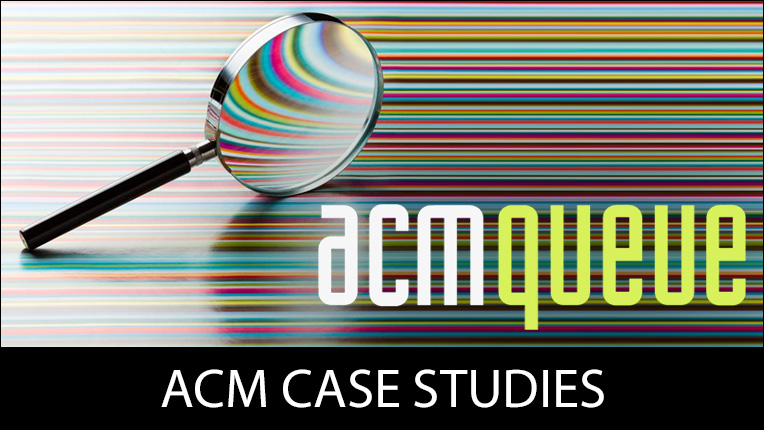Chapter Outreach and Communication
Chapter Newsletter
A chapter newsletter is an excellent tool for building interest and encouraging participation in chapter activities. Titles (or subtitles) of the newsletter should contain "Newletter of the {ACM Chapter Name}". Titles should not include the terms that are used to identify other genres. In addition to "Newsletter" itself, terms like Bulletin, Forum, News, Notes, Notices, Pointers, and Exchanges often occur in newsletter titles.
Newsletter content varies. Below are suggested topics that can appear in print and/or online versions of the newsletter:
Information on Activities
- Meeting announcement and biographical information for an upcoming speaker
- Chapter conference and/or Professional Development Seminar announcements
- Meeting announcements for other related organizations and other activities
- Most chapters establish contact with other computer societies in the area to exchange publicity announcements. Once the contacts are established, chapters should mail meeting notices to these groups and reciprocate by including their notices in the chapter newsletter.
- Announcements of ACM and ACM SIG conferences - these are all displayed on the ACM Conference Calendar
Chapter Membership and Leadership Information
- Chapter Membership Application
- Minutes of executive council meetings
- Reports on chapter committee meetings from the people involved along with announcements of future committee meetings.
- List of Council officers, their employers, and telephone numbers supplied by the secretary
- Names of all local corporate associate sponsors
- Chairperson Corner- Notes and updates supplied by the Chapter Chairperson
Reviews and Continuing Education:
- Courses in the computer field given by schools, universities, and private companies, and government activities related to computing and technology.
- Meeting reviews; conference reviews; book reviews
- Articles on pertinent topics, obtained from the following sources:
- ACM news releases at http://services.acm.org/public/pressroom/index.cfm
- Newsletters from other ACM local chapters and related organizations: Exchange of chapter newsletters is a good means of keeping up with events in groups similar to your own. Other chapter newsletters are also a source of ideas on format and content.
The publications committee and other chapter members may assist the newsletter editor in preparing the issue for the printer. The editor should develop guidelines and procedures for publication, including a timeline for publication:
- 4 weeks before meeting date - all input in the editor's hands
- 3 weeks before meeting date - layout completed and submitted to printers
- 2 weeks before meeting date - newsletters delivered to post office
- 1 week before meeting date - members receive newsletter
ACM has created a new standard Chapter logo. This is the logo that should be used on your newsletter cover and on your chapter website.
Printing and Copying
Check printing charges from several local printers. In some cases, photocopying might be more cost effective for small runs. Establishing a relationship with a printer can lead to discounts on repeat business. Working with a printer that has a digital pre-press facility is a strong advantage. The technicians there best know how to output documents for printing on their particular presses, and can offer you valuable pointers in preparing your work. Consider the resolution and line screen of your images in reference to the method you will use to reproduce your publications and other materials. Keep in mind that additional charges are made for folding, collating, and stapling the newsletter. Most printers will deliver finished work free of charge.
Distribution
Allow sufficient time in your schedule for preparing print or electronic newsletters and announcements for distribution. Keep in mind that readers should receive the newsletter at least one week before the chapter meeting to give them time to plan to attend.
When preparing pieces for mailing, recruiting the help of several members can be very helpful. Affixing labels and postage can be tedious and time consuming. If you are preparing for bulk mail distribution, be sure to have all the bulk mail materials and guidelines available to ensure your mail goes out in a timely fashion.
As non-profit organizations, ACM chapters are entitled to reduced third-class mailing rates. But first-class mail is often worth the extra cost because the newsletter will arrive locally within two working days after it is mailed. Inquiries about rates should be sent to the chapter's local post office.
Financing
Sources of financial support will vary depending on the local situation. The most common source of funding is through a newsletter sponsorship program. Generally, the chapter finds a company or companies willing to donate typing and printing services (or funds to pay for those services) in return for acknowledgment of the company's support in the newsletter. Before beginning such a program, the newsletter editor and the chapter chairperson should read the ACM policy and procedure statement regarding such programs (section 15.3.1.2 in the ACM Policy and Procedures, located in the appendix). For tax purposes, as well as to comply with ACM policy, it is important to distinguish between an acknowledgment of support and a paid advertisement.
The following is a summary of the guidelines approved by the ACM Executive Committee for any chapter wishing to make arrangements for newsletter sponsorship. There are generally two kinds of newsletter sponsorship agreements, as follows:
- One sponsor for one issue: a single organization/company pays for the cost of publication and distribution of one newsletter issue and is acknowledged in that issue.
- Several sponsors for newsletters issued over a period of time: A group of organizations/sponsors pay for the cost of publication and distribution and are all acknowledged in each issue of the newsletter.
The chapter Treasurer must account for all sponsor money on the annual financial statement to the ACM Director of Finance. One copy of each newsletter published must be sent to ACM Headquarters.
ACM does not prohibit chapters from accepting paid advertising, but the practice is strongly discouraged. As a general rule, ACM chapters should always be very careful to maintain the non-commercial nature of the Association, especially in a local area. At a more pragmatic level, for chapters in the United States, the appearance of paid advertising in a newsletter may jeopardize the chapter's non-profit bulk mailing rights.
Finally, there are several complex IRS issues involved with US not-for-profit organizations and advertising revenue. Revenue from newsletter advertisements is considered "unrelated business income," which is potentially taxable (even for not-for-profit organizations.) The IRS requires that any chapter which collects over $1000 per year of such income complete and submit a 990-T return, a form which many accountants consider one of the most confusing and difficult IRS forms to understand and prepare. Although ACM chapters may be included in ACM's Group 990 return, they cannot be included in ACM's 990-T, so they must prepare the form themselves. Any chapter considering accepting paid advertising should consult the ACM Director of Finance to understand the various tax and other issues involved.
Lifelong Learning
ACM offers lifelong learning resources including online books and courses from Skillsoft, TechTalks on the hottest topics in computing and IT, and more.

ACM Case Studies
Written by leading domain experts for software engineers, ACM Case Studies provide an in-depth look at how software teams overcome specific challenges by implementing new technologies, adopting new practices, or a combination of both. Often through first-hand accounts, these pieces explore what the challenges were, the tools and techniques that were used to combat them, and the solution that was achieved.

